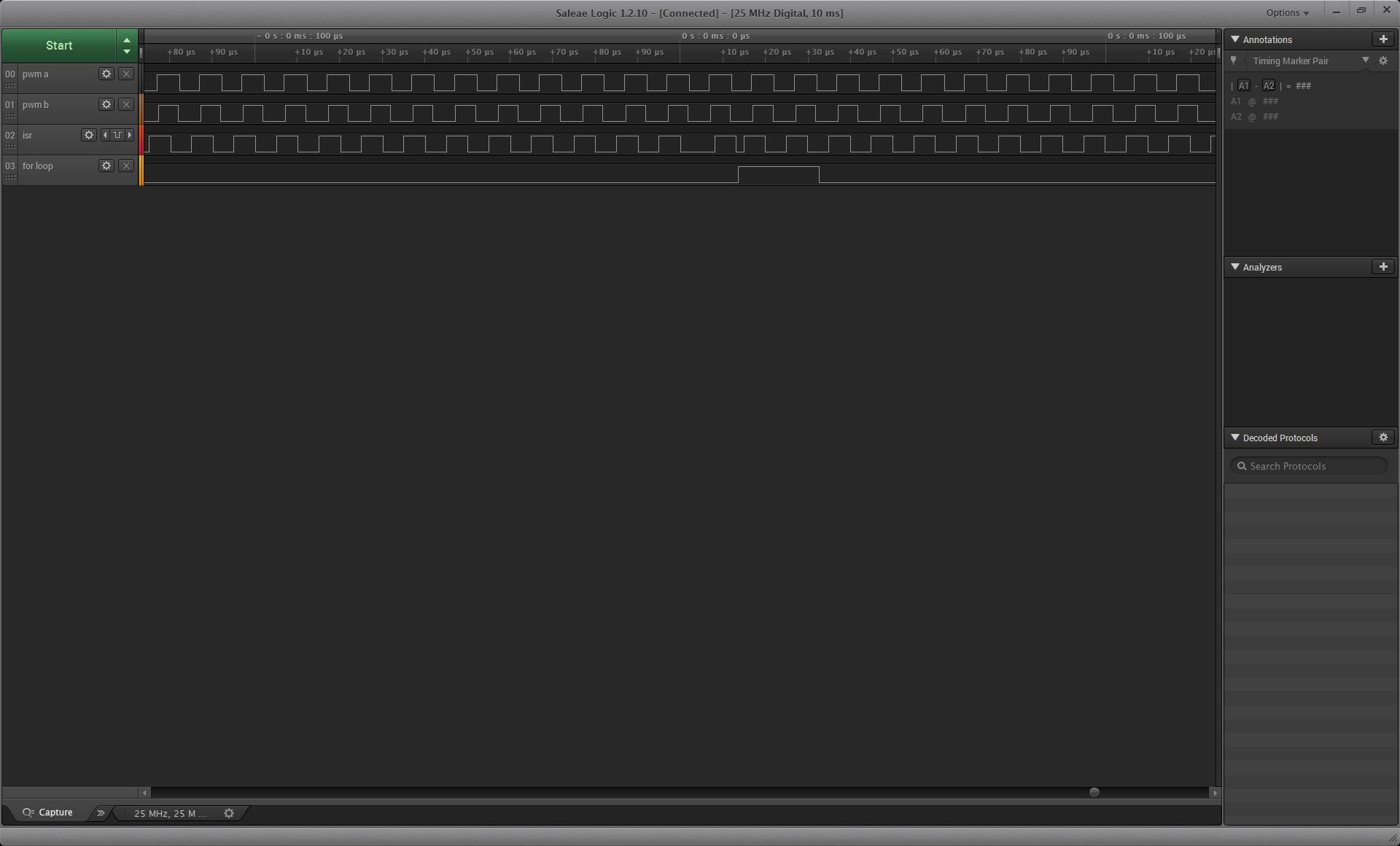Hi,
I have a PWM interrupt with 100 kHz and for debugging I toggle a GPIO at begin of the ISR. On the Oszi I observe a maximal jitter of 2 us (120 cycles).
The maximal jitter depends definitely on the code of the main loop.
This long Interrupt latency seems to be caused by a for-loop where 64 register are copied. If I split the for-loop into two for-loops the ISR latency is reduced to the half. (See sample code).
void main(void) {
...
unsigned reg1[64], reg2[64];
while(1) {
....
set GPIO Y
#if 1
// cause 2 us Interrupt latency
for(int i = 0; i < 64; i++) {
reg1[i] = reg2[i];
}
#else
// cause 1 us Interrupt latency
for(int i = 0; i < 32; i++) {
reg1[i] = reg2[i];
}
for(int i = 32; i < 64; i++) {
reg1[i] = reg2[i];
}
#endif
clear GPIO Y
}
}
void isr_pwm(void){
toggle GPIO X
}
Is it possible that a for-loop stall the ISR?
- No disabled ISR
- No nested ISR
- All code is in the ram.
- Maybe stack and the code in the same physical memory block


